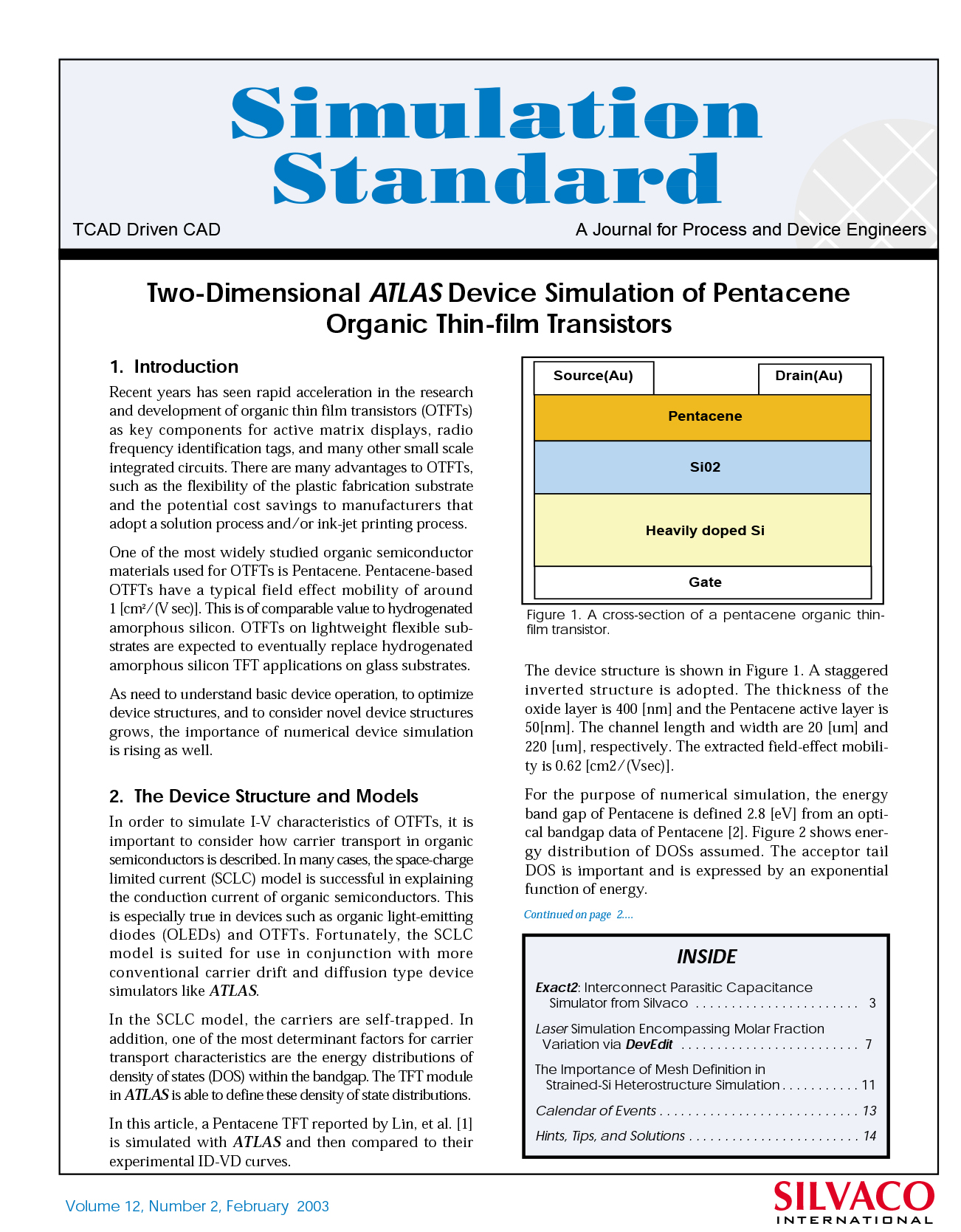Two-Dimensional ATLAS Device Simulation of Pentacene Organic Thin-film Transistors
Introduction
Recent years has seen rapid acceleration in the research and development of organic thin film transistors (OTFTs) as key components for active matrix displays, radio frequency identification tags, and many other small scale integrated circuits. There are many advantages to OTFTs, such as the flexibility of the plastic fabrication substrate and the potential cost savings to manufacturers that adopt a solution process and/or ink-jet printing process.
One of the most widely studied organic semiconductor materials used for OTFTs is Pentacene. Pentacene-based OTFTs have a typical field effect mobility of around 1 [cm2/(V sec)]. This is of comparable value to hydrogenated amorphous silicon. OTFTs on lightweight flexible substrates are expected to eventually replace hydrogenated amorphous silicon TFT applications on glass substrates.
As need to understand basic device operation, to optimize device structures, and to consider novel device structures grows, the importance of numerical device simulation is rising as well.



